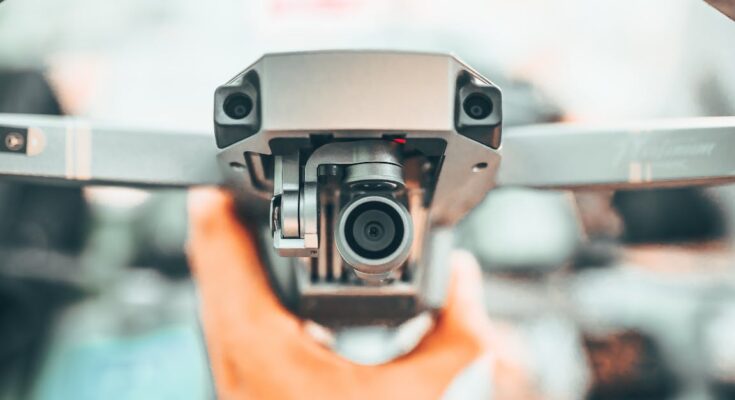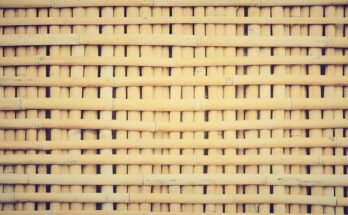So, you’ve seen drones flying around, maybe taking cool videos at a park or hovering over a construction site, and thought, “Okay, those look neat.” But if you’re only thinking about drones as fancy flying cameras or toys, you’re missing a huge chunk of the picture. Lots of folks only see the fun side and don’t realize just how much these gadgets are quietly changing the world around us. They’re not just for hobbyists anymore; businesses, governments, and rescue teams are using them for some pretty serious stuff. This article is gonna pull back the curtain and show you some of the most amazing and important jobs drones are doing right now, jobs that probably touch your life in ways you haven’t even considered. Get ready to see how these flying robots are way more than just toys – they’re powerful tools doing real work and solving big problems.
Getting a Bird’s-Eye View on Tough Jobs
Think about places that are really hard or dangerous for people to get to. Like the very top of a massive wind turbine, way up high. Or the underside of a huge bridge, hanging over water. Or maybe a tall cell phone tower that needs checking after a storm. Traditionally, people would have to climb ropes, use cranes, or put themselves in risky spots to inspect these structures. It’s slow, expensive, and, let’s be honest, super dangerous. Drones change the game here completely.
Now, instead of sending a person up, you can send a drone with a high-definition camera. It can fly right up close, get detailed pictures and videos of every nut, bolt, or crack, and do it way faster. Imagine inspecting miles of power lines after bad weather without having linemen climb every single pole. Drones zip along the lines, spotting damage quickly. It’s like giving inspectors superpowers, letting them see everything safely from the ground or a control station nearby. This saves time, saves money, and most importantly, saves lives.
Keeping Watch from Above
When you need to keep an eye on a large area, whether it’s a big factory complex, a sprawling farm, or a public event, it can be tough to cover all the ground. Security guards can only be in one place at a time, and traditional camera systems might have blind spots. Drones offer a flexible, mobile way to add eyes in the sky.
Picture a security team monitoring a big music festival. Instead of just having guards walking around, they can have a drone silently flying overhead, giving them a live video feed of the entire crowd. They can spot potential problems or see where people are bottlenecking before things get out of hand. Or think about protecting valuable property spread over acres. A drone can do routine patrols, following a set path and sending back images, acting as a constant, low-cost aerial watchman. Some can even use thermal cameras to detect intruders hiding in the dark. It adds a whole new layer to keeping things safe and secure without needing a massive team on the ground.
Delivering the Goods (Literally)
Getting things from one place to another isn’t always easy, especially in crowded cities or hard-to-reach rural spots. Traffic jams make ground transport slow, and sometimes you just need something delivered *fast*. Drone delivery, while still growing, is becoming a real thing, promising to change how we get everything from medicine to pizza.
Imagine someone in a remote village needing urgent medical supplies. A drone can fly over challenging terrain – mountains, rivers, bad roads – and get the package there in minutes, not hours. Or picture a future where small packages from online orders zip directly to your backyard instead of sitting on a delivery truck stuck in traffic. Companies are experimenting with this right now. While we’re not quite at the point where every package arrives by drone, for specific needs – like quickly getting a forgotten item to a customer or delivering critical supplies during an emergency – drones are proving they can cut through the logistical mess and get things where they need to be, fast and efficiently.
Helping Out When Disaster Strikes
When things go really wrong – like during an earthquake, a hurricane, or a big fire – getting information and help into affected areas is incredibly difficult and dangerous. Roads might be blocked, communication lines down, and buildings unstable. This is where drones step in as vital first responders.
Think about the aftermath of a flood. Rescue teams need to know which areas are worst hit, where people might be trapped, and the safest routes to get help in. Sending people or helicopters into an unstable area is risky. Drones can fly over flooded neighborhoods, assess damage, find survivors using thermal sensors, and map out safe paths for rescue teams to follow, all without putting human lives directly in harm’s way. They can even carry small supply drops like first-aid kits or communication devices. In a crisis, having those quick, accurate eyes in the sky can make the difference between life and death, helping authorities understand the situation and coordinate aid much more effectively.
Mapping the World in Detail
Making accurate maps of the world is super important for construction, city planning, farming, and lots of other things. Traditionally, this involved surveyors walking around with equipment, or using expensive airplanes to take aerial photos. It took ages and cost a ton of money. Drones offer a much quicker, cheaper, and more detailed way to create maps and 3D models of areas.
Imagine a construction company needing a precise 3D map of a site before they start building. Instead of waiting weeks for a survey team, they can send a drone up, which flies a programmed path, takes thousands of pictures, and special software stitches them together to create an incredibly detailed, accurate model of the ground. Farmers use drones to map their fields, seeing exactly where crops are healthy and where they need attention. This helps them use water and fertilizer more efficiently. It’s like getting a super-detailed, up-to-the-minute blueprint of an area whenever you need it, making planning and decision-making way smarter.
Smart Farming with Flying Helpers
Modern farming isn’t just about planting seeds and waiting. Farmers need to manage huge fields efficiently, deal with pests and diseases, and make sure crops get exactly what they need to grow strong. Drones are becoming really useful tools on the farm, helping farmers work smarter, not harder.
Think about a massive cornfield. Walking every row to check for problems would take forever. A farmer can fly a drone over the field, and using special cameras (like infrared), the drone can show which plants are stressed from lack of water or nutrients, or which areas are infested with bugs, even before the farmer can see it with their own eyes. This means the farmer only has to treat the specific problem areas, saving money on pesticides and fertilizers and being better for the environment. Some drones can even spray small amounts of treatment directly onto problem spots, targeting issues with incredible precision. It’s precision farming from the air, helping grow more food with less waste.
Looking Ahead
So, as you can see, drones are way more than just fun gadgets for taking cool aerial photos. We talked about how they make inspecting tricky places safer, help keep large areas secure, are starting to deliver important stuff quickly, act as crucial eyes during emergencies, create super-detailed maps, and even help farmers grow crops more efficiently. These are just some of the ways these flying robots are stepping up to do jobs that were once dangerous, slow, or even impossible for people. The tech is getting better all the time, too – longer battery life, smarter programming, carrying more weight. It feels like we’re only just starting to scratch the surface of what drones will be able to do in the next few years. It’s an exciting time for this technology, and its impact is only going to keep growing.




